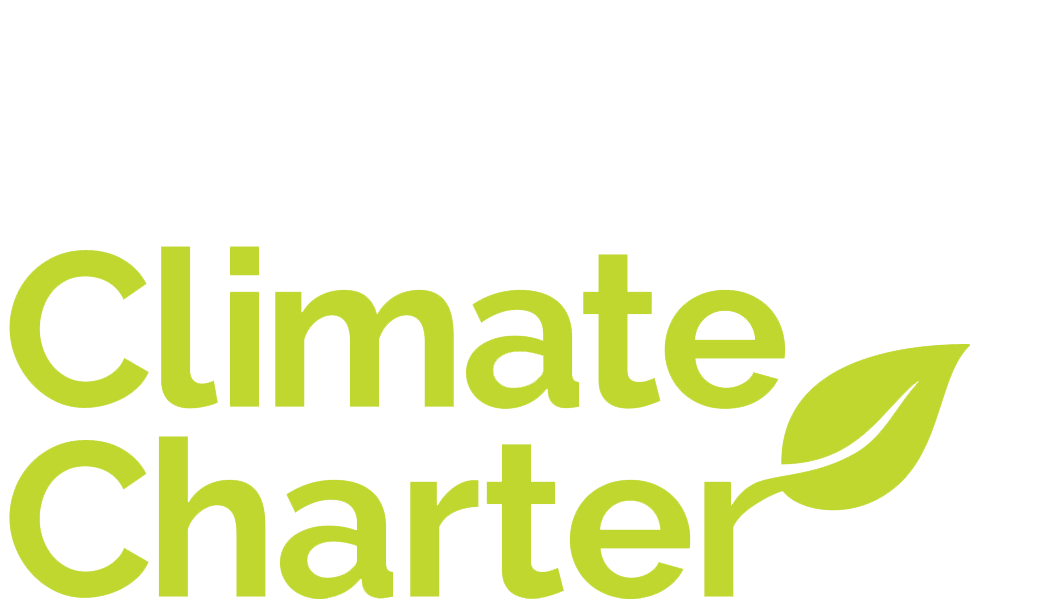5 ways marketers can use ChatGPT – and the future of generative AI for marketing

Everywhere you turn, marketers are getting into heated discussions about the impact of generative AI tools like ChatGPT. We're all not-so-patiently debating: will these tools ultimately replace the marketing roles we know today? Or will they become invaluable aides in developing marketing strategies and completing day-to-day tasks?
There's no simple answer, and it will take time to see how generative AI continues to evolve and be applied in the workplace. After all, the topic has only exploded in popularity a few months ago. Since launching in November 2022, ChatGPT has driven huge spikes in readership across the Taboola network – generating more than 58 million pageviews in April alone. All eyes have also been on tech giants like Google and Microsoft as they announce their own competitive A tools.
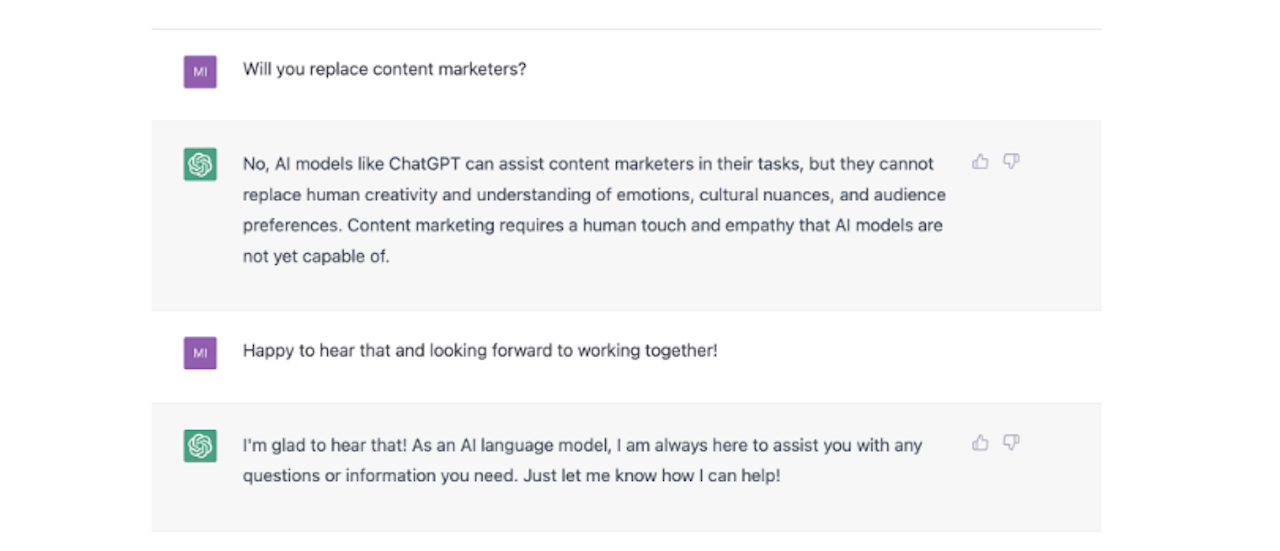
But we do know one thing: marketers can (and should) start learning to use these tools now to optimize their work and drive results. Those that do can cut down on time and costs, and gain a competitive edge in the industry.
Not quite sure how to start? We tested the waters – prompting ChatGPT to help craft ad copy, emails, landing pages, SEO updates, and blogs from repurposed content.
1. Ad copy
It's tough to get your ads noticed and compete for attention online. Gen Z audiences in particular have just a 1.3 second attention span for viewing ads. So brands have to work extra hard to hook them in, often A/B testing dozens of variations of copy. To see if ChatGPT could help with this process, we started with this prompt:

ChatGPT offered these headline options in under 60 seconds:
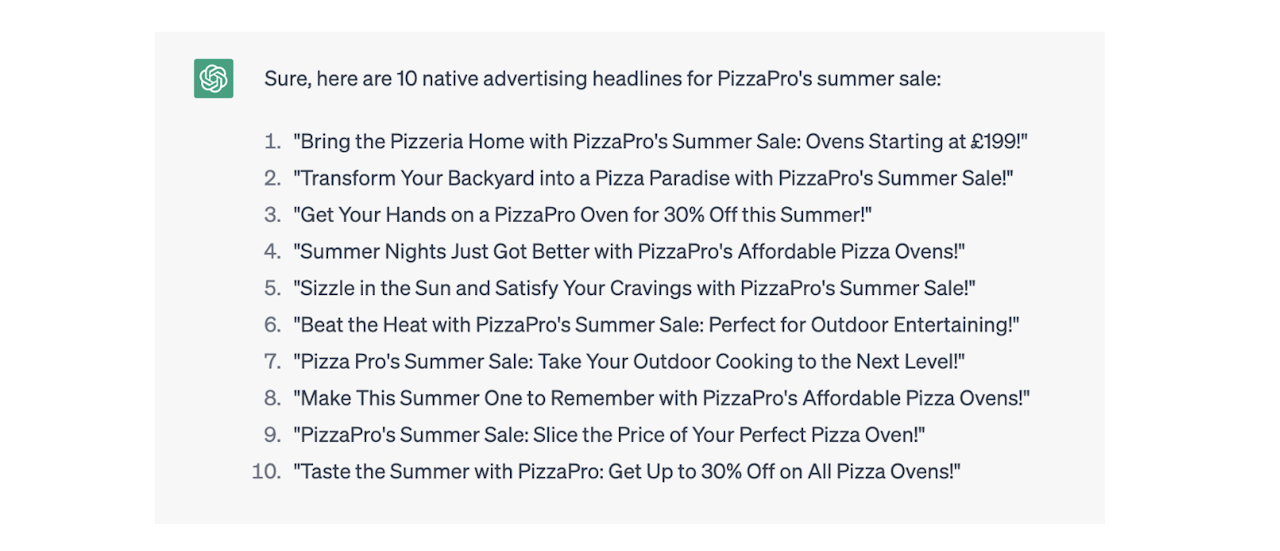
Of course, these responses just provide a starting point for your ad copy. You can use ChatGPT's suggestions as a foundation, pulling keywords and phrases that you think will work with your audience. You can then mix and match headline ideas, and build a variety of options to A/B test against each other. In this way, marketers can not only save a lot of time, but also trial ideas that they might not have thought of otherwise.
2. Email marketing
Email remains one the most reliable channels for reaching your audience. But, again, you're competing for attention in an inbox full of emails from friends, colleagues, family, publishers, and brands. To get your message noticed, you have to deliver stellar copy at each step of the user journey.
Step 1: Get the user to open the email
First, you need to serve up an attention-grabbing and actionable subject line. Here's what ChatGPT had to offer for a flower delivery service:
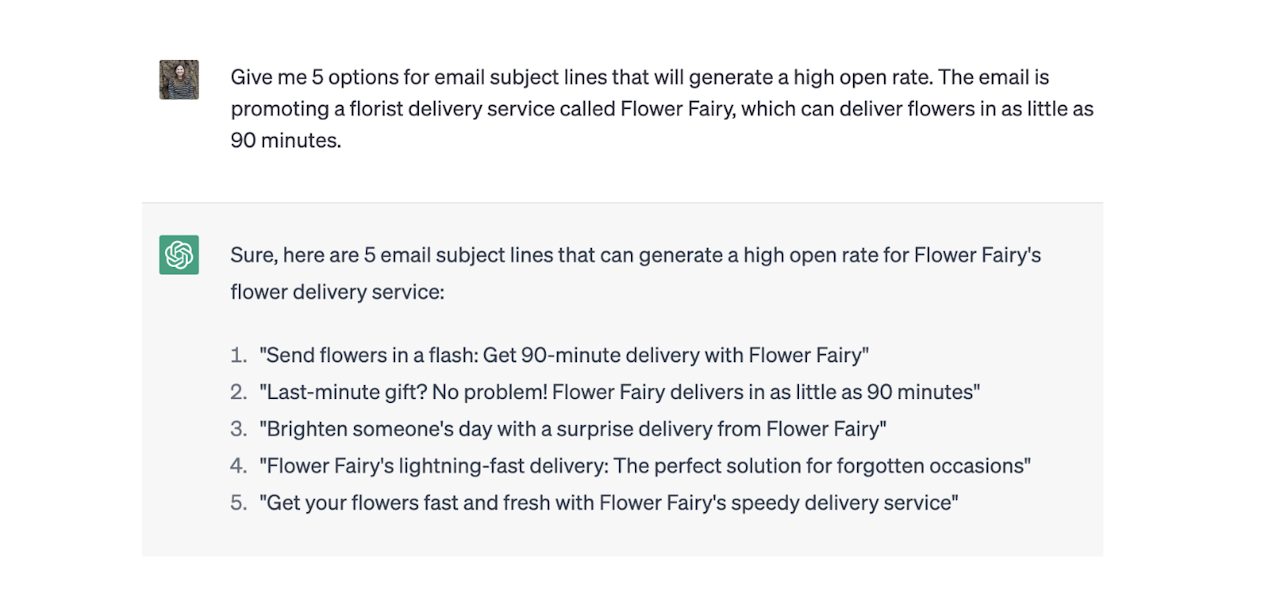
Step 2: Get the user to read the email
Once your user opens the email, you have to keep them interested with brief but informative copy.
So we asked ChatGPT to write a consideration email for that same service:
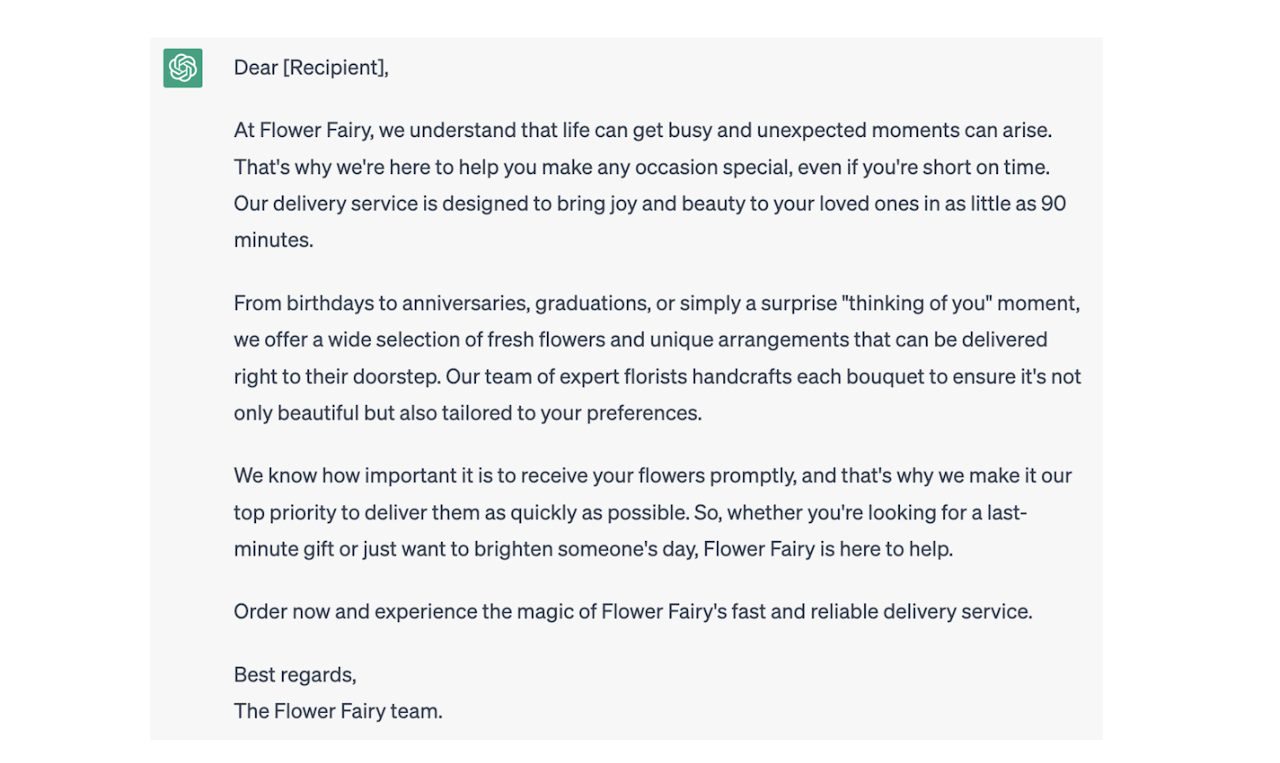
The human marketer could step in to shorten the copy and add some more personal touches. But this first draft does a good job at explaining the service's value offer.
Step 3: Get the user to click on the CTA
Your ultimate goal is to get users to engage with the email and click through to the next step of the user journey. That means they need to click on your call to action (CTA) – but crafting the right CTA is both an art and a science.
So we asked ChatGPT to take the first stab at it:
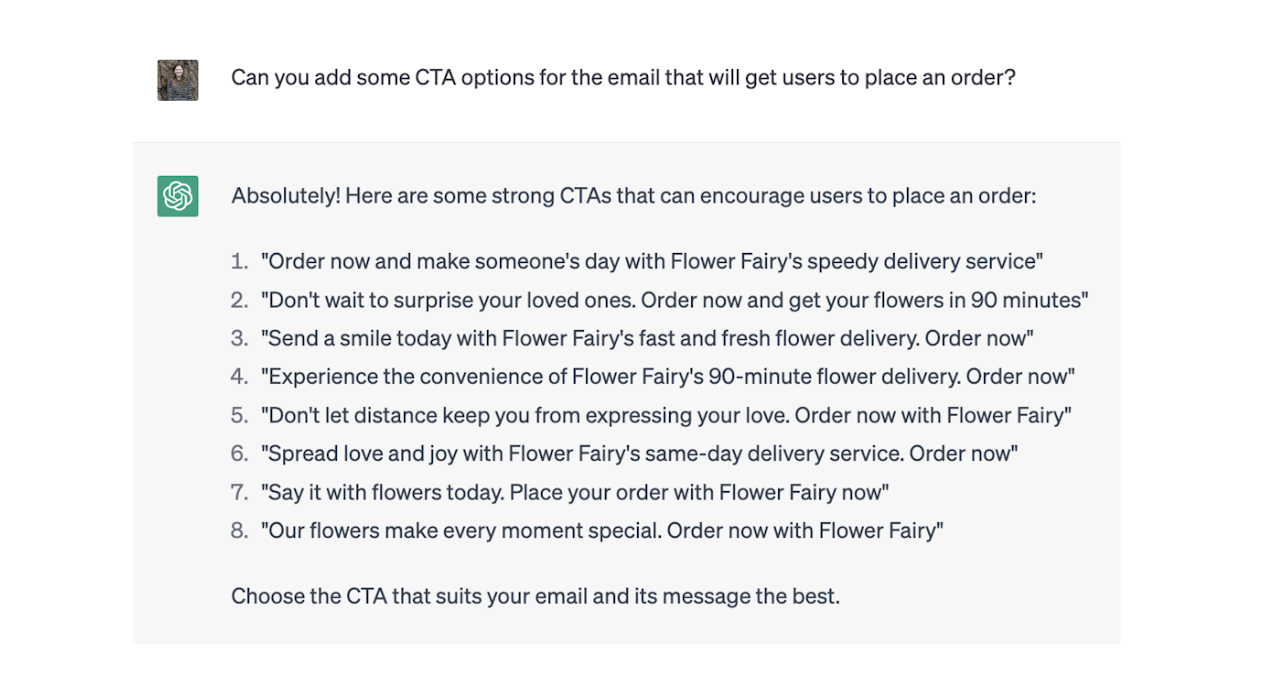
ChatGPT came up with a variety of options, each summarizing the brand's biggest benefits to inspire those clicks. You could choose one, mix and match elements from a few, or conduct A/B testing to see which option drives the highest click through rate.
3. Landing pages
Even if your ads are top-notch, you need to follow through with an engaging landing page that entices users to take action.
This is another area in which generative AI tools can help – optimizing landing pages for conversions. We tested it with a landing page promoting one of our regular webinars, feeding ChatGPT the structure and copy of the page:
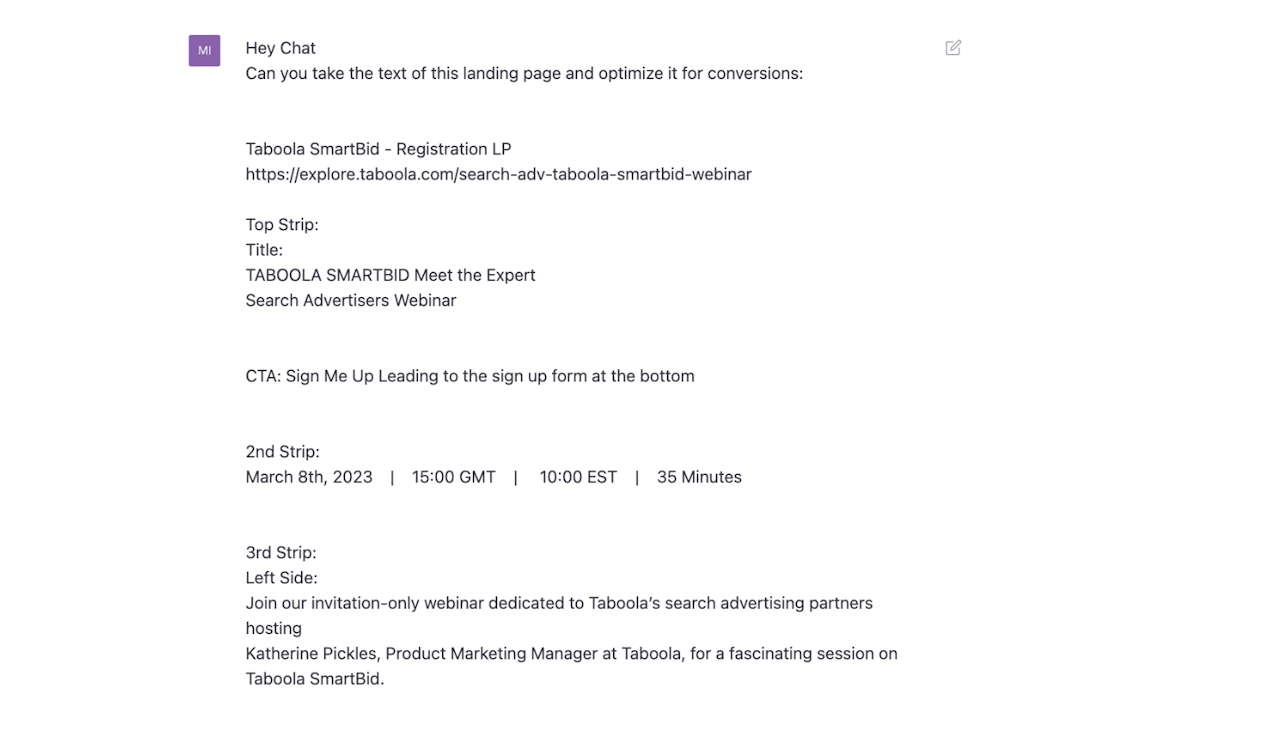
Here's the response from ChatGPT:
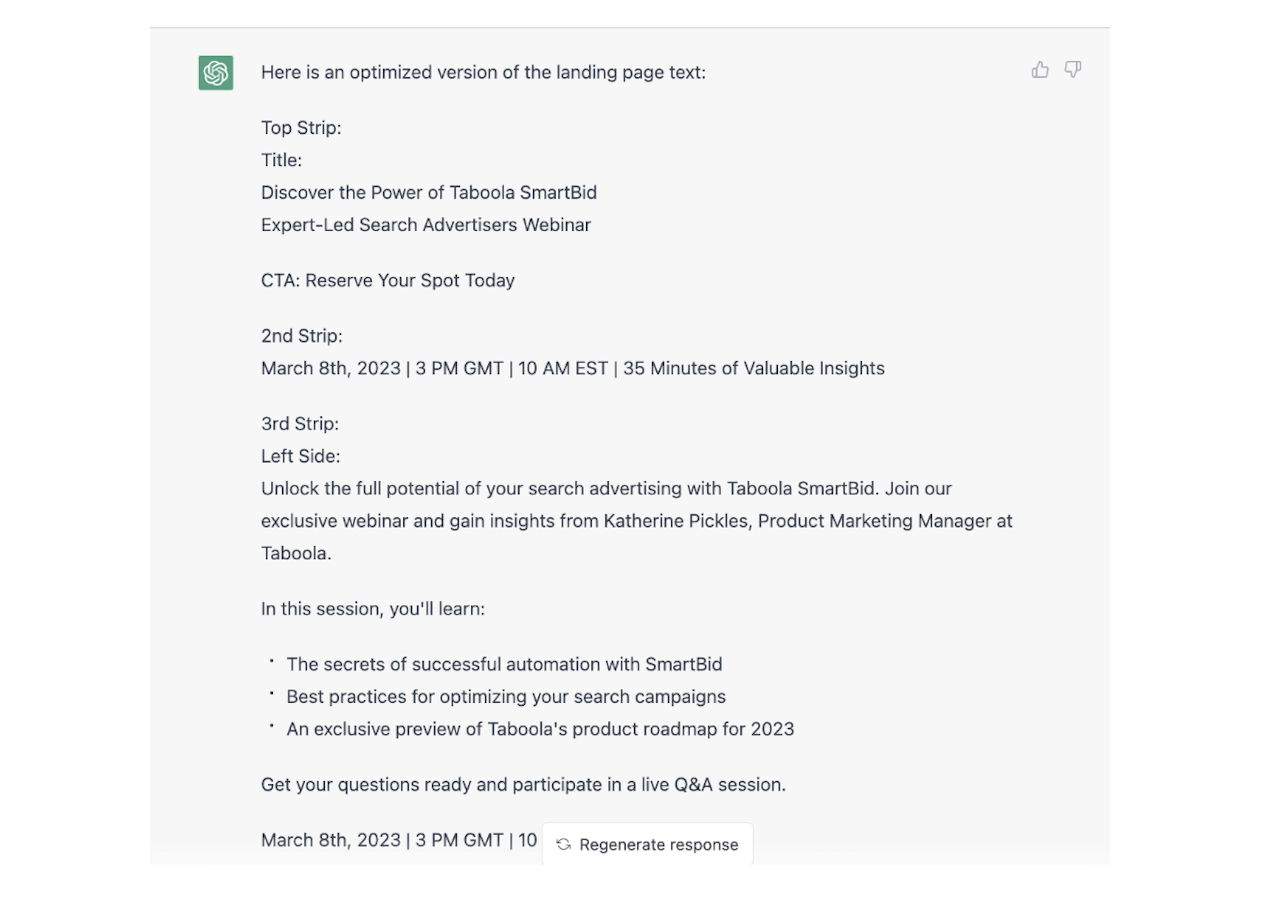
The program even understood how to split the landing page copy into different sections like Top Strip, Title, and CTA.
Next, we asked the AI tool to amend the landing page to target a specific audience:
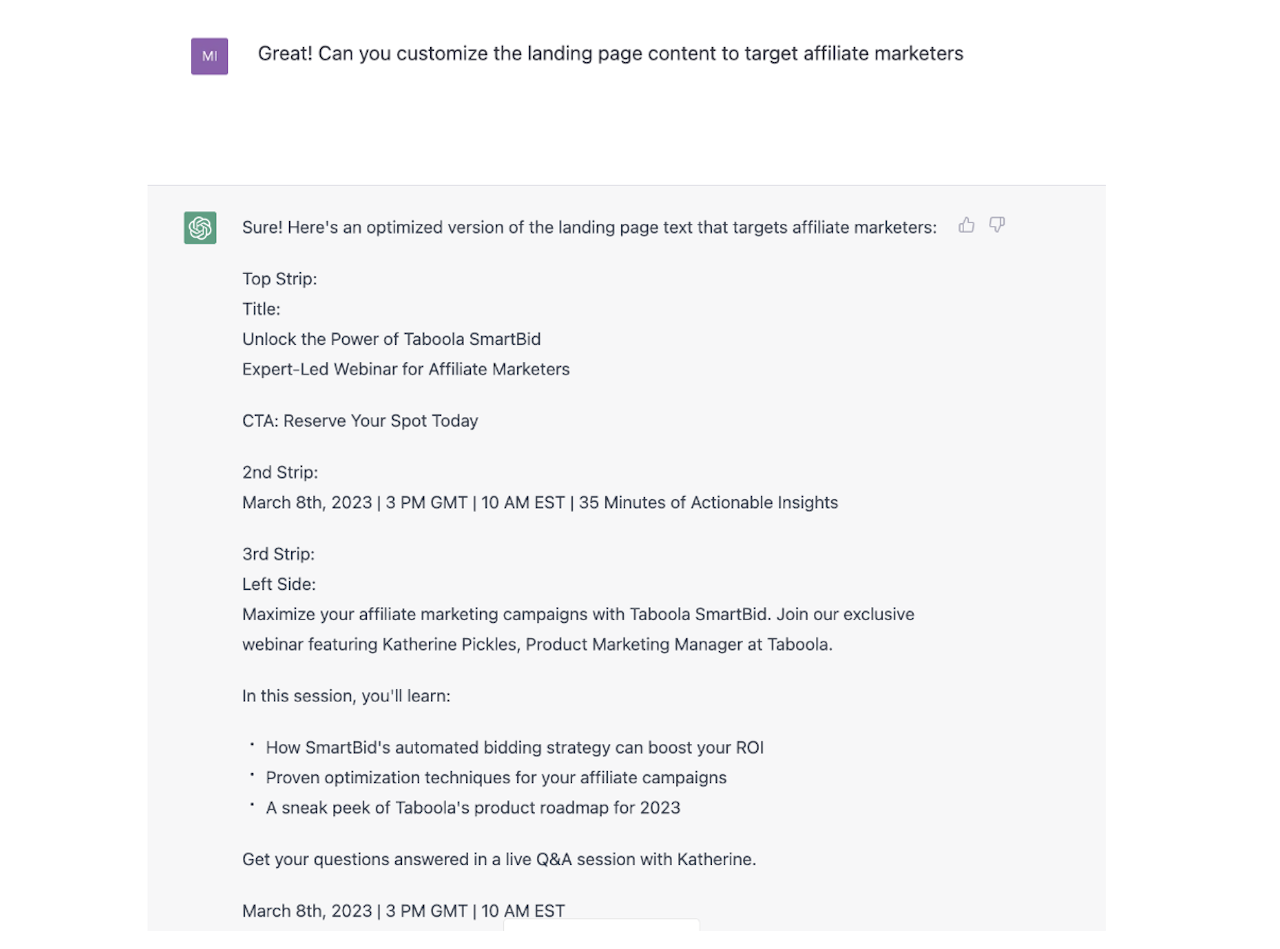
It did a pretty good job of adapting the text for a certain reader, adding key terms like “affiliate marketers," “affiliate campaigns," and “boost ROI" – which are also helpful for search engine optimization.
4. SEO
ChatGPT makes it almost criminally simple to optimize your content for organic search results. As long as you can come up with the keywords, the generative AI tool can help update your page accordingly.
For this prompt, we asked ChatGPT to optimize text for a cybersecurity company targeting families with children:
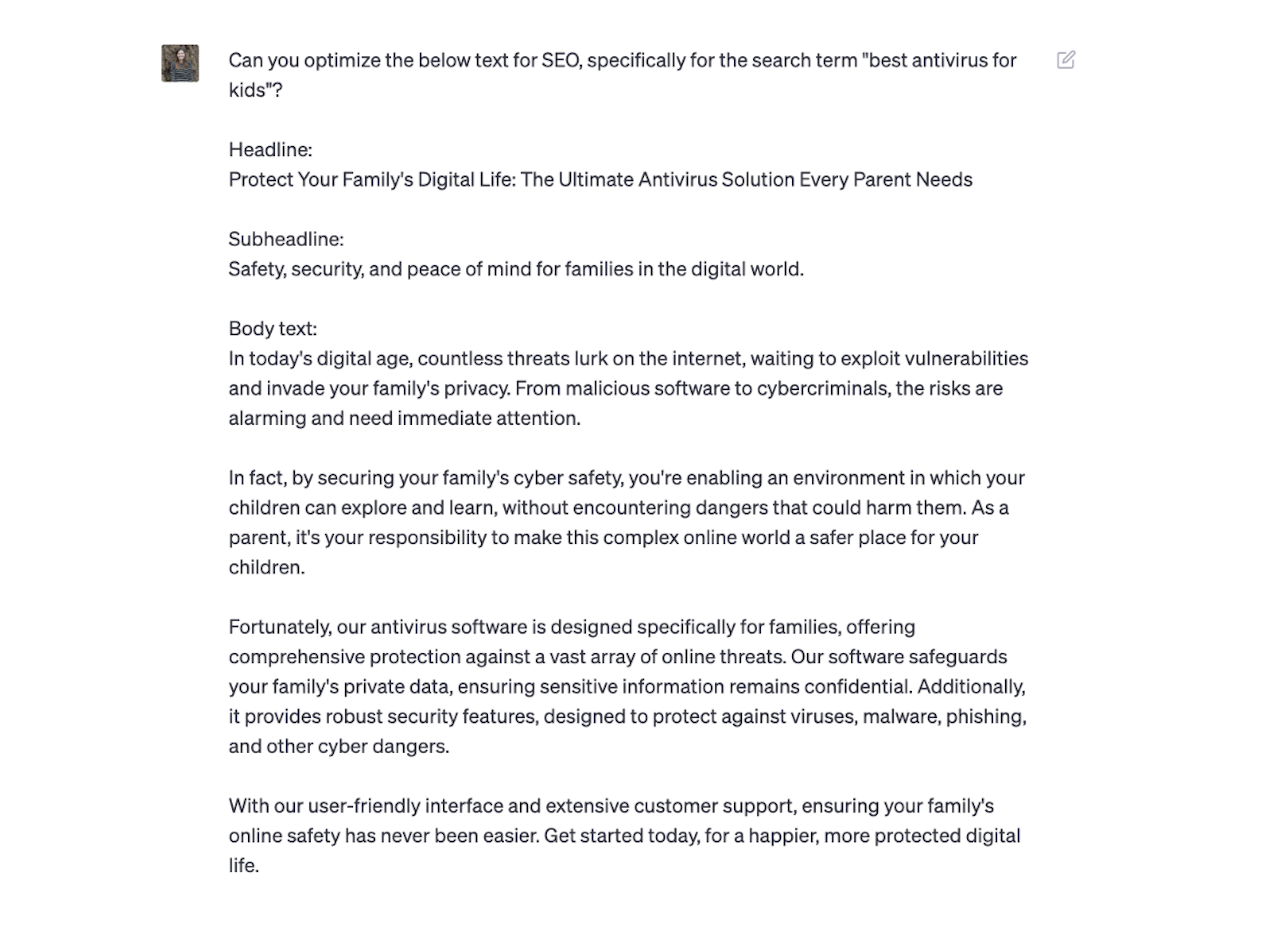
In less than a minute, the copy was optimized as requested:
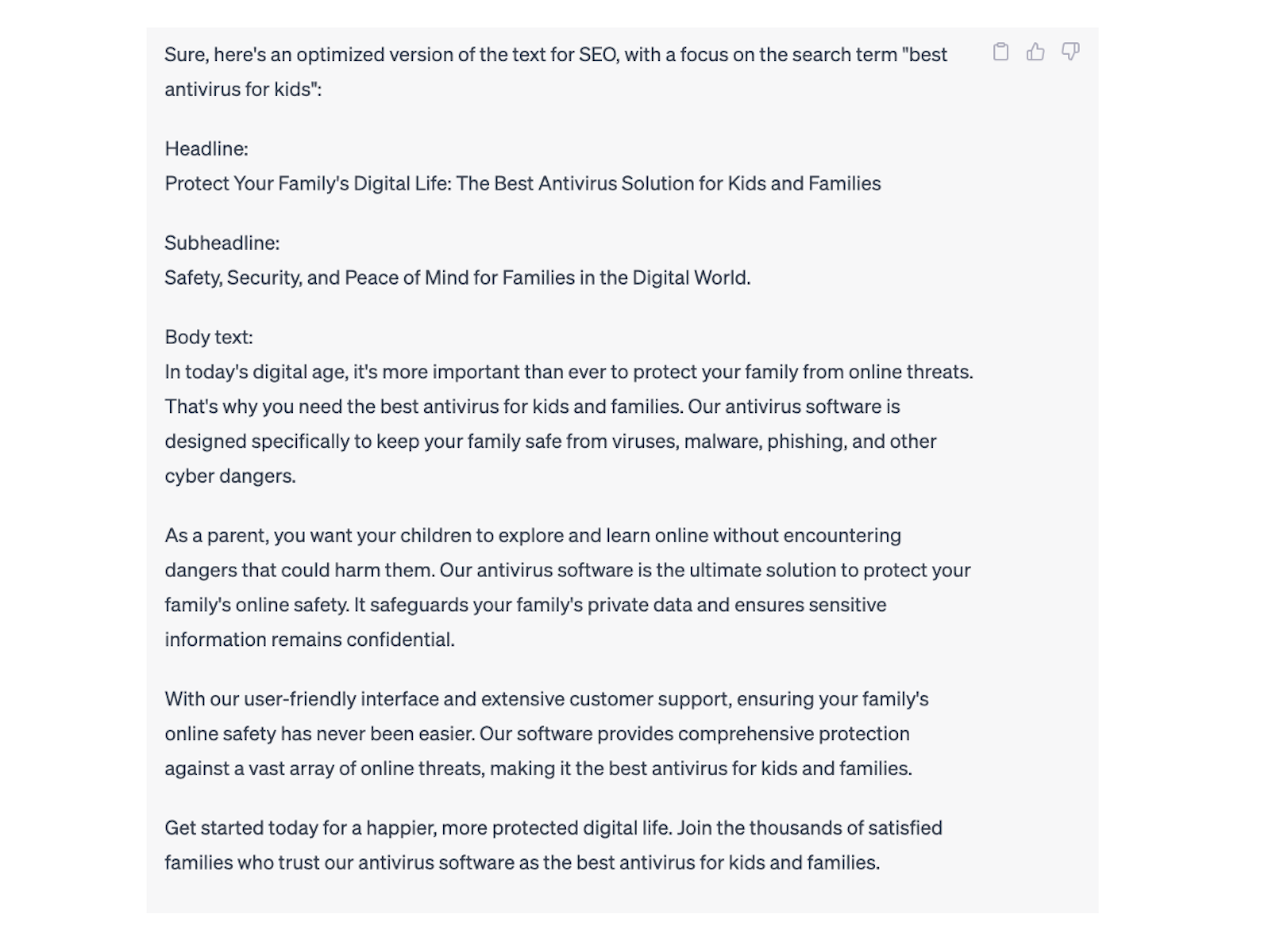
Of course, the very existence of generative AI may change the SEO game completely: Google just launched AI-powered search results, and is famous for regularly making changes to their search algorithm. AI may not be quick enough to keep up with these changes – at least for now.
5. Repurposing content
Recycling content for different channels can help you save a lot of time when building new campaigns. Tools like ChatGPT can make that process even easier. After all, ChatGPT is essentially a content repurposing tool itself – absorbing information from across the web and using it to pump out new variations of text.
Marketers can use this to their advantage, taking existing content and repurposing them into lead-generating assets in minutes.
Here's our (pretty meta) example:

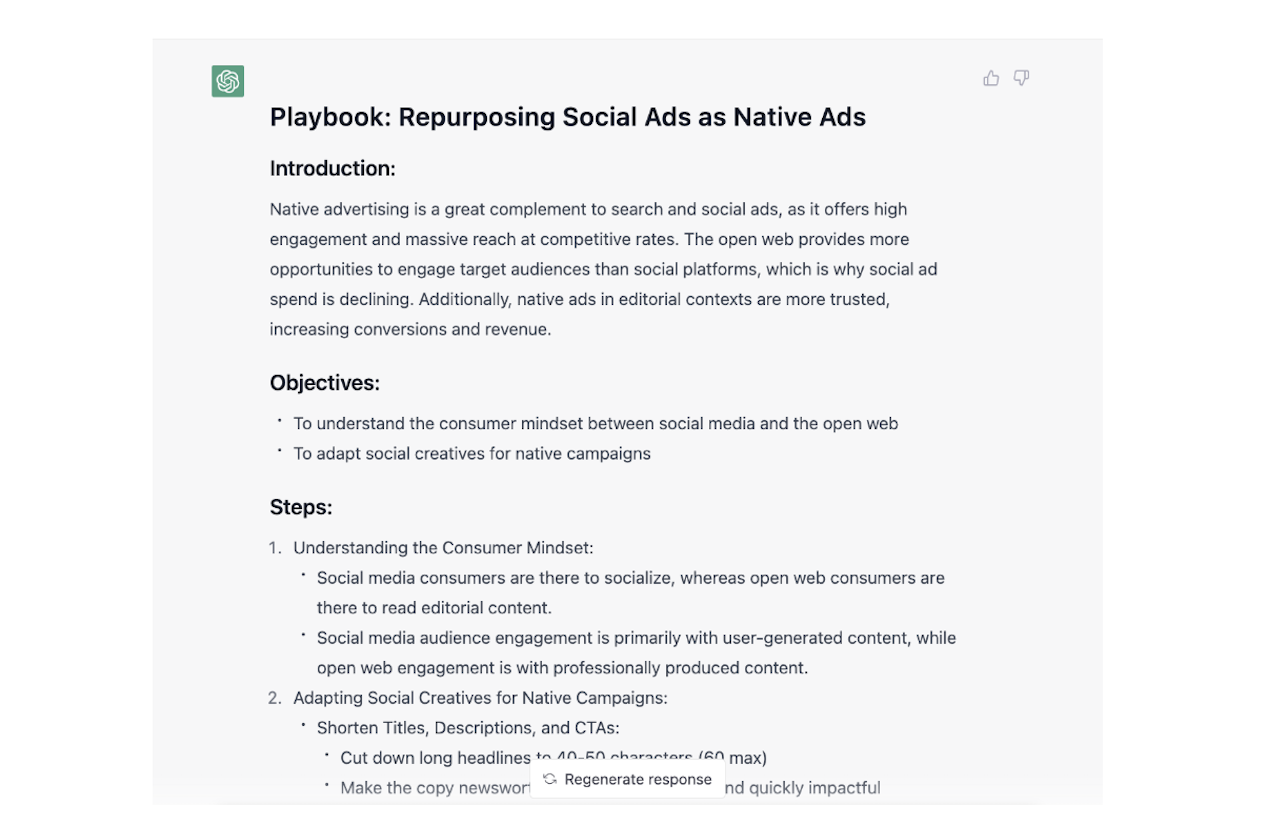
With some tweaks and design effort, we could easily use this to create a downloadable one-pager or a jumping off point for a longer piece of content.
The future of generative AI in marketing
These are just five examples of how marketers can use generative AI tools like ChatGPT to drive performance and get ahead of the competition. As these tools continue to evolve, they may have the power to revolutionize marketing processes for brands.
Taboola, for example, is beta testing ways to integrate generative AI into our platform. Using data from tens of billions of engagements, the tool will help advertisers optimize their creatives and ultimately build more efficient and effective campaigns.
No one can know exactly what changes generative AI holds for the marketing industry, but in one form or another, it's here to stay. Best-in-class marketers will continue to experiment with these tools to optimize their work processes and boost creativity, while those who shy away from it will likely fall behind.
Source: The Drum, Miri Bar Nathan (Taboola)

